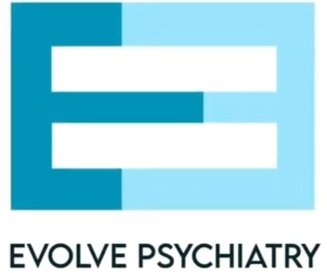Bipolar Disorder
Contrary to the stereotype, bipolar disorder is not uncontrollable mood swings occurring every other day. While bipolar disorder can involve extreme mood swings, the severity and frequency of them will greatly vary per person. In reality, some people will only experience several episodes in an entire year. It all depends on if the individual seeks professional treatment.
Long-Term Benefits of Professional Treatment
With different types of bipolar disorder, each patient will experience different episodes and symptoms unique to their situation. We can help the patient learn to manage the symptoms and work through these episodes.
If you are struggling with bipolar disorder and want to find an effective solution, our treatment can help.
Since bipolar disorder is a lifelong condition, it is crucial for patients to learn how to cope with and manage the symptoms. We can customize a treatment plan to help patients function in their daily routine and society with the ability to handle an episode if one occurs. Benefits of our customized bipolar treatment include:
Understanding of the condition and related symptoms
Identifying any other physical or psychiatric conditions connected to the bipolar disorder
Developing coping techniques and methods for high and low episodes
Building a support network of people who can help
Finding a medication that helps to ease the symptoms
Being able to continue living life to the fullest
Developing a custom treatment plan that meets the individual patient’s needs
By developing coping techniques, patients will be able to identify the start of an episode and avoid negative behaviors which can lead to one. This can include identifying a situation that will trigger a specific type of response and changing it or avoiding it. We will take the time to identify the patient’s needs and customize treatment.
Before treating bipolar disorder, patients need to understand there are several different forms of bipolar disorder.
Understanding the Types of Bipolar Disorder
People who experience a bipolar episode may experience emotional highs that are known as mania or hypomania. Patients may also experience emotional lows, which include depression. People who experience an emotional high will feel full of energy, euphoric or irritable. These changes can seem almost unexplainable when they occur.
The four types of bipolar disorder include Bipolar I, Bipolar II, Cyclothymic and unspecified disorder.
Bipolar I Disorder
Being diagnosed with bipolar I disorder means that a patient has experienced one manic episode before experiencing a hypomanic or major depressive episode. What many people may not realize is that a manic episode can last for several days at a time.
To be diagnosed with this type of bipolar disorder, the patient needs to have a manic episode of at least seven consecutive days. If a patient is severe enough that hospitalization is necessary, then this also qualifies for bipolar I disorder.
Bipolar II Disorder
Bipolar II disorder is when patients have depressive episodes that shift between hypomanic episodes. Hypomanic episodes are less extreme than full episodes of mania. Patients with this type of disorder will have never experienced a full manic episode. If patients are unsure of what type of episode they have had, we can help to determine that.
Cyclothymic Disorder
Cyclothymic disorder is a condition in which the patient experiences a chronically unstable mood state that involves hypomania and mild depression for at least two years. People with this type of bipolar disorder will experience brief periods throughout the year in which the experience relatively normal moods. However, these periods will only last for about eight weeks maximum.
Unspecified (Other Specified)
This type of bipolar disorder occurs when a patient experiences significant mood elevation but does not meet the requirements to be defined as bipolar I, bipolar II or cyclothymic. It is important to clarify these emotions are significant episodes and not minor changes in mood.
Symptoms of Bipolar Disorder
By keeping an eye out for the various symptoms, people will be able to know when they need to seek professional treatment. Signs of manic and hypomanic episodes can include the following symptoms over several days:
A sudden increase in energy, agitation, talkativeness and self-confidence
Abnormal amounts of being upbeat or jumpy
Racing thoughts
Sudden spending sprees or making foolish investments
Easily distracted
Increased agitation
Signs of major depressive episodes can include:
Depressed mood with sadness or irritability
Loss of interest or pleasure in hobbies and activities
Significant weight change
Regular fatigue or loss of energy
Feelings of worthlessness or inappropriate guilt
Considering or attempting suicide
If you are experiencing any of these symptoms or other mental health issues, give us a call and schedule an appointment today.

